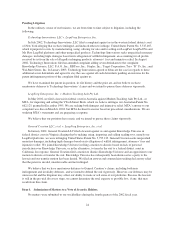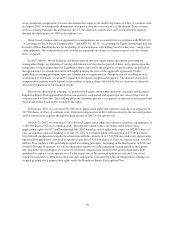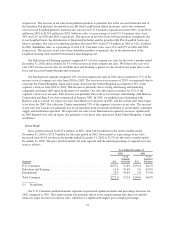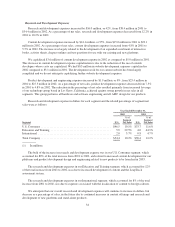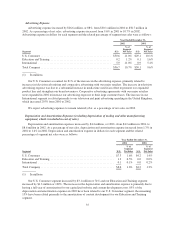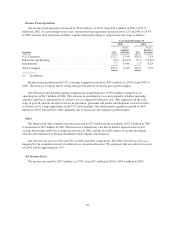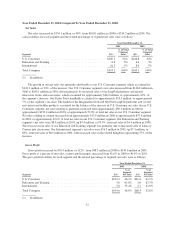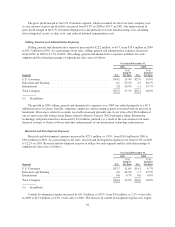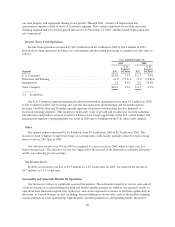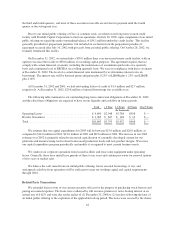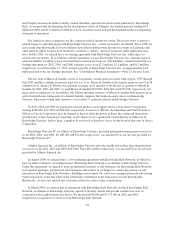LeapFrog 2002 Annual Report Download - page 39
Download and view the complete annual report
Please find page 39 of the 2002 LeapFrog annual report below. You can navigate through the pages in the report by either clicking on the pages listed below, or by using the keyword search tool below to find specific information within the annual report.
Research and Development Expenses
Research and development expenses increased by $16.0 million, or 42%, from $38.4 million in 2001 to
$54.4 million in 2002. As a percentage of net sales, research and development expenses decreased from 12.2% in
2001 to 10.2% in 2002.
Content development expenses increased by $14.1 million, or 95%, from $15.0 million in 2001 to $29.1
million in 2002. As a percentage of net sales, content development expenses increased from 4.8% in 2001 to
5.5% in 2002. The increase was largely related to the development of an expanded assortment of interactive
books, activity sheets, chapter outlines and test questions for use with our existing and new platforms.
We capitalized $3.6 million of content development expense in 2002 as compared to $5.0 million in 2001.
This decrease in content development expense capitalization is due to the reduction of the use of outside
developers whose costs are capitalized. We had $0.3 million in website development expenses capitalized in
2002 compared to $3.1 million in 2001. The development work for our current website has been largely
completed and we do not anticipate capitalizing further website development expenses.
Product development and engineering expenses increased by $1.9 million, or 8%, from $23.4 million in
2001 to $25.3 million in 2002. As a percentage of net sales, product development expenses decreased from 7.5%
in 2001 to 4.8% in 2002. The reduction in the percentage of net sales resulted primarily from increased leverage
of our technology group based in Los Gatos, California, achieved against strong growth in net sales in all
segments. This group performs all hardware and software engineering and all ASIC design for our products.
Research and development expense in dollars for each segment and the related percentage of segment net
sales were as follows:
Year Ended December 31,
2002 2001
Segment $(1)
%of
Segment
Net Sales $(1)
%of
Segment
Net Sales
U.S.Consumer ................................................. $46.5 10.1% $33.7 11.6%
Education and Training .......................................... 5.9 29.5% 4.0 44.9%
International ................................................... 2.0 3.7% 0.8 4.7%
TotalCompany................................................. $54.4 10.2% $38.4 12.2%
(1) In millions.
The bulk of the increase in research and development expense was in our U.S. Consumer segment, which
accounted for 80% of the total increase from 2001 to 2002, and related to increased content development for our
platforms and product development design and engineering related to new products to be launched in 2003.
The research and development expenses in our Education and Training segment, which accounted for 12%
of the total increase from 2001 to 2002, was due to increased development of content and the LeapTrack
assessment system.
The research and development expenses in our International segment, which accounted for 8% of the total
increase from 2001 to 2002, was due to expenses associated with the localization of content to foreign cultures.
We anticipate that our overall research and development expenses will continue to increase in dollars, but
decrease as a percentage of sales, in the future due to continued increases in content offerings and research and
development of new platforms and stand-alone products.
34


